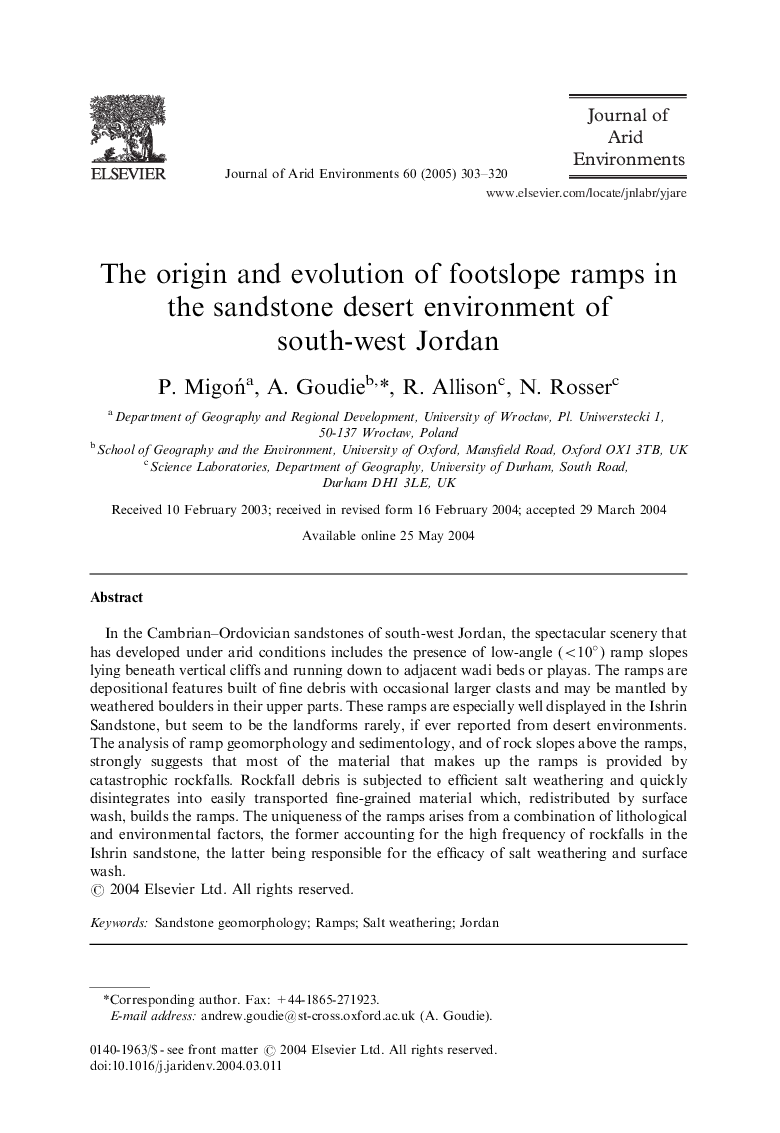| Article ID | Journal | Published Year | Pages | File Type |
|---|---|---|---|---|
| 9447973 | Journal of Arid Environments | 2005 | 18 Pages |
Abstract
In the Cambrian-Ordovician sandstones of south-west Jordan, the spectacular scenery that has developed under arid conditions includes the presence of low-angle (<10°) ramp slopes lying beneath vertical cliffs and running down to adjacent wadi beds or playas. The ramps are depositional features built of fine debris with occasional larger clasts and may be mantled by weathered boulders in their upper parts. These ramps are especially well displayed in the Ishrin Sandstone, but seem to be the landforms rarely, if ever reported from desert environments. The analysis of ramp geomorphology and sedimentology, and of rock slopes above the ramps, strongly suggests that most of the material that makes up the ramps is provided by catastrophic rockfalls. Rockfall debris is subjected to efficient salt weathering and quickly disintegrates into easily transported fine-grained material which, redistributed by surface wash, builds the ramps. The uniqueness of the ramps arises from a combination of lithological and environmental factors, the former accounting for the high frequency of rockfalls in the Ishrin sandstone, the latter being responsible for the efficacy of salt weathering and surface wash.
Keywords
Related Topics
Physical Sciences and Engineering
Earth and Planetary Sciences
Earth-Surface Processes
Authors
P. MigoÅ, A. Goudie, R. Allison, N. Rosser,
